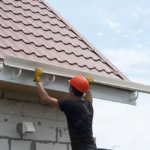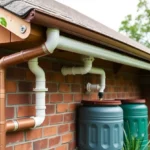Homeowners often wonder, ‘How do I find my roof warranty?’ With all the excitement that comes with owning a home, keeping track of various home warranties can be challenging. A roof warranty is an essential part of your home protection plan, ensuring your roof is covered for repairs or replacements due to defects or damage. This guide will explain how to locate and understand your roof warranty, what it covers, and why it’s crucial. Stay with us as we delve into this topic and give you exclusive, unmissable, and remarkable insights that could be life-changing for your home maintenance strategy.

What is a Roof Warranty and Why is it Important?
A roof warranty serves as a promise from the manufacturer or contractor regarding the quality and durability of the roofing materials or installation. Possessing a roof warranty can be the lifeline homeowners need against unexpected expenses due to faulty materials or improper installation. It’s important to understand the different types of warranties and what they cover which can be a shocking revelation for many new homeowners. Often, there are two main types: a manufacturers warranty and a contractors workmanship warranty.
Manufacturers Warranty
A manufacturers warranty typically covers defects in the roofing materials. These warranties can vary greatly, often ranging between 10 to 30 years, depending on the material used. The terms of these warranties are often specific and may require proper installation and maintenance to remain valid. For a deeper understanding of roofing materials and what they might mean for your warranty, you can have a look at TPO Roofing.
Contractors Workmanship Warranty
A contractors workmanship warranty covers installation errors. The duration and coverage of these warranties can vary based on the contractor and the terms agreed upon in your contract. A contractor offering a workmanship warranty demonstrates confidence in their installation skills, giving homeowners peace of mind. If you are looking into hiring a roofing contractor, make sure you choose the best with our guide on choosing a roofing company.
How Do I Locate My Roof Warranty?
Finding your roof warranty can be simple if you know where to look and what to look for. Here are some strategies to help:
Contact Your Contractor
The first step in finding your roof warranty is to contact the contractor who installed the roof. They should have a record of your warranty terms and may even have a copy of the warranty document. If its been a while since your roof installation, track down your contractor through old invoices, emails, or contact details logged at the time of service.
Check Your Documents
Paperwork relating to your home can often be overwhelming, but it can be a worthwhile exercise. Review any documentation you received when you moved into your home, including the sale and installation papers. These documents might include specific warranty details or, at the very least, an indication of who the manufacturer is. New homeowners can learn more about major roofing materials from our guide on top 5 roofing materials.
Contact the Manufacturer
If your contractor is unavailable or unable to help, contacting the manufacturer is another option. When contacting the company, be ready to provide any relevant details like the date of installation, name of the contractor, and product specifics if possible. Manufacturers are usually helpful and can provide warranty information provided the roof was registered with them.
Understanding the Coverage of Your Roof Warranty
Knowing what your roof warranty covers is just as important as knowing the duration. Here are the critical aspects generally covered:
Material Defects
Most warranties cover defects in the roofing materials. If a shingle curl occurs or your metal roof corrodes due to manufacturing issues, the warranty should cover the costs of materials and labor for repairs. Understanding the details of your roofing material can shed light on potential issues covered under warranty, which can be explored further in our article on EPDM roofing.
Installation Errors
A workmanship warranty will typically cover errors made during installation. However, these warranties are often separate from the manufacturer’s warranty and are provided by the contractor who performed the installation.
Exclusions in Warranty
Be mindful of whats not covered by your warranty. Damage from natural disasters, poor maintenance, or alterations made without professional assistance are common exclusions. Its crucial to understand these to avoid complications when making warranty claims.
Maximizing Your Roof Warranty’s Value
Ensuring you get the most out of your roof warranty involves certain good practices:
Regular Maintenance
Routine roof inspections and maintenance can prolong your roof’s life and keep the warranty valid. Many warranties require regular maintenance to stay effective, which is why homeowners should perform annual check-ups or after significant weather events.
Proper Installation
Proper installation is a prerequisite for warranty validity. Ensuring your roof has been installed correctly by qualified professionals is essential. If this topic sparks interest, learn more from our tips on building roof design.
When to Claim Your Roof Warranty
Claiming your warranty involves several steps, and knowing when and how to do so can save you stress and money. Try to act promptly upon discovering an issue. Delay could mean the difference between a covered repair and an out-of-pocket expense.
Documentation
Submit a documentation of your claim, which may include receipts, photos of damages, and proof of warranties. This documentation will greatly aid your case and speed up the claim process.
Understanding Procedures
Each company might have different procedures or requirements when it comes to submitting a warranty claim. Understanding these procedures is crucial to ensure your claim is processed without a hitch.
Frequent Problems with Roof Warranties
Like any legal agreement, roof warranties have their pitfalls:
Invalid Claims
Improper filing of claims is common due to misunderstandings regarding coverage. Always ensure that you have thoroughly checked your warranty document.
Transferrable Concerns
Not all warranties automatically transfer to new homeowners upon the sale of a property. Confirm the terms and conditions before making any assumptions.
Language Ambiguity
Legal jargon in warranty documents often makes it challenging for homeowners to understand what is covered. Seek clarity from the provider or a legal expert if you’re uncertain.
Conclusion: A Vital Document Worth Finding
In conclusion, the importance of knowing ‘how do I find my roof warranty?‘ cannot be overstated. This crucial document could be the key to significant savings in case something goes wrong with your roof. Whether it’s a material defect or an installation error, knowing what your warranty covers and how to claim it is essential to maintaining your valued home investment.

FAQs
1. What if I can’t find my roof warranty document?
Don’t panic. Start by contacting your contractor or the roofing material manufacturer. Often, they keep records of such transactions.
2. Can I transfer my roof warranty to a new owner?
It depends on the warranty terms. Some warranties are transferable, but always check the specific conditions mentioned in your document.
3. How often should I maintain my roof?
At least once a year or after severe weather incidents to ensure it remains in optimal condition, and the warranty remains valid.
For more extensive insights on roofing warranties and installation, consider visiting Architectural Digests roof cost guide.
This article contains affiliate links. We may earn a commission at no extra cost to you.








